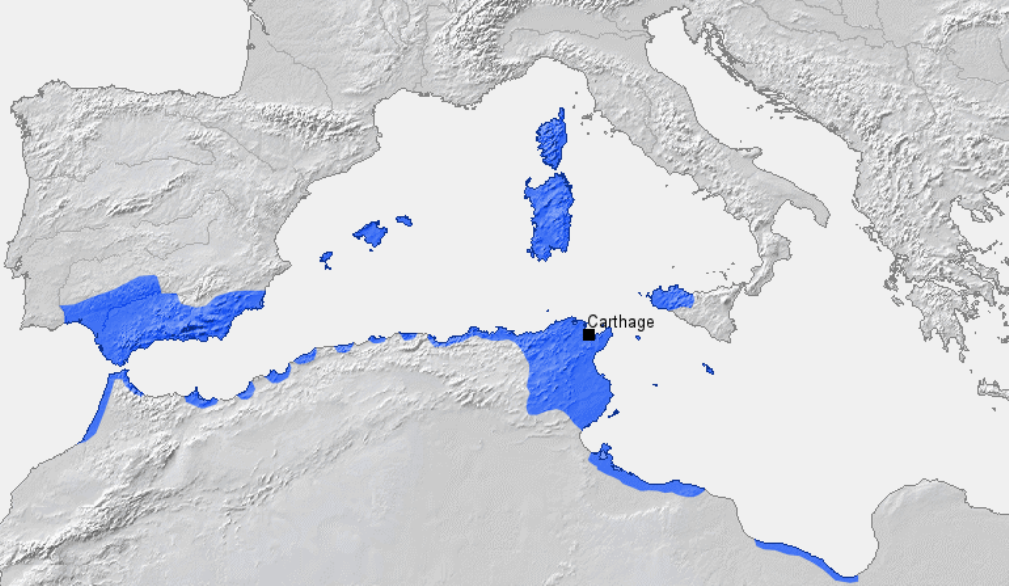Carthaginian Empire

Carthaginian Empire
The Carthaginian Empire, a major ancient Phoenician state, was renowned for its affluent capital, Carthage, located in modern-day Tunisia. This empire, emerging from a Phoenician colony, flourished as a dominant power in the western Mediterranean during the first millennium BC.
Carthage was a hub of maritime and commercial activity, strategically located to control major trade routes. Its vast mercantile network extended from west Asia to northern Europe, dealing in diverse commodities and exports like agricultural products and manufactured goods. Carthage's military strength was bolstered by a powerful navy and a diverse army comprising mercenaries from various regions.
Despite its expansion and cosmopolitan nature, Carthage maintained its unique Punic identity, deeply rooted in Canaanite heritage. The society was known for its commercial prowess, innovative spirit in areas like serial production and uncolored glass, and a distinctive system of governance that combined elements of democracy, oligarchy, and republicanism.
However, Carthage is often remembered for its protracted conflicts with Rome, notably the Punic Wars, which included some of the largest battles in antiquity. These wars culminated in Carthage's destruction by Rome in 146 BC, marking the end of Carthaginian civilization and paving the way for Roman dominance in the Mediterranean.
Carthage's history, largely derived from Roman and Greek sources due to the destruction of Carthaginian texts, has been revised and enriched by archaeological research since the late 19th century, shedding light on the civilization's contributions to art, culture, and politics.
Today, the ruins of ancient Carthage lie in Tunisia, a testament to its once-great civilization and an important archaeological and tourist site. The Carthage National Museum and the Carthage Paleo-Christian Museum showcase artifacts and ruins, providing insights into the rich history of this ancient empire.
For collectors and experts in art and antiques, the Carthaginian Empire offers a realm of historical richness and cultural depth. To stay informed about updates related to Carthage, including new product sales and auction events, sign up for our newsletter. Our updates promise insights into the world of Carthaginian art and antiques, catering specifically to your interests as a collector or historian. Subscribe now to delve deeper into the intriguing legacy of the Carthaginian Empire.
| Country: | Africa, Europe, Tunisia |
|---|---|
| Start of the period: | 575 BC |
| End of the period: | 146 BC |



